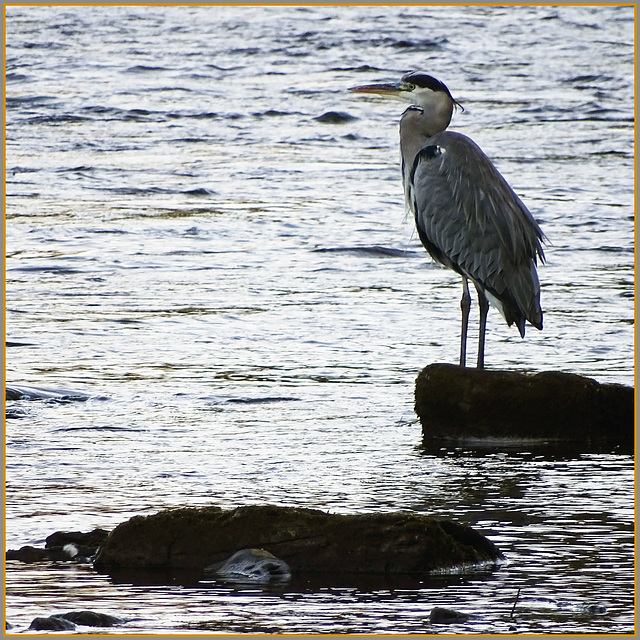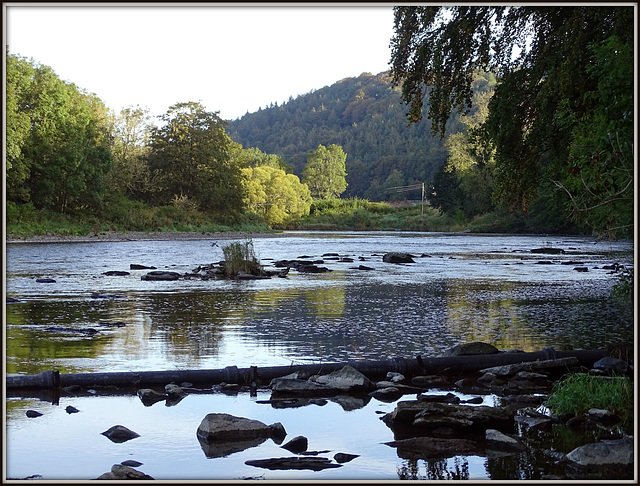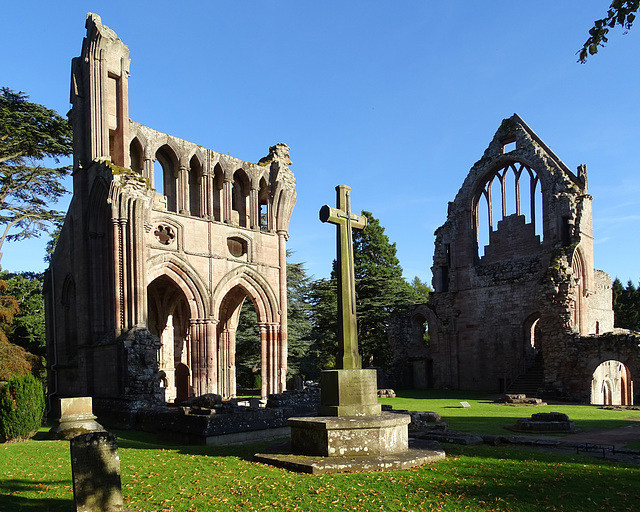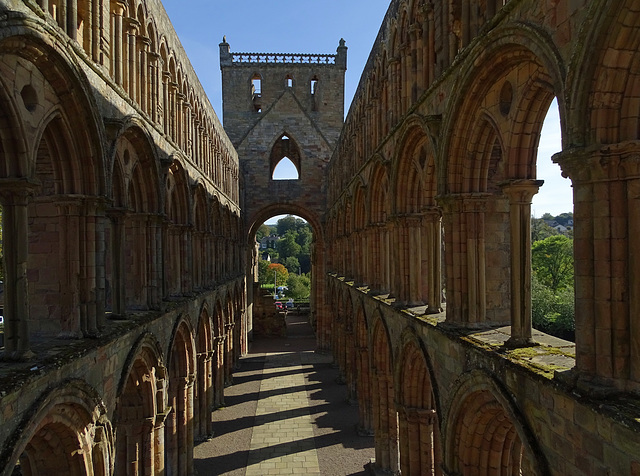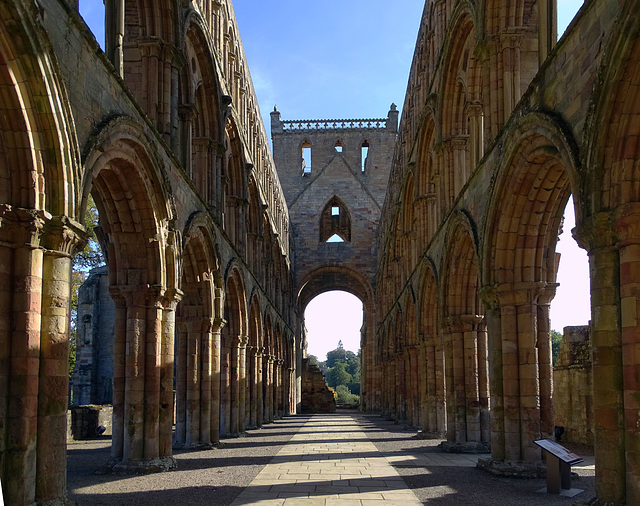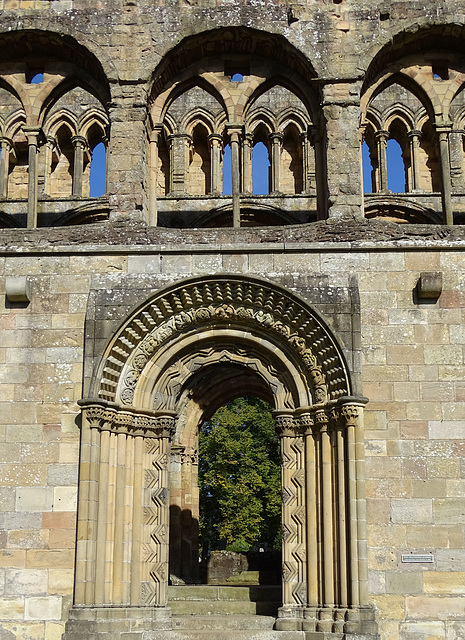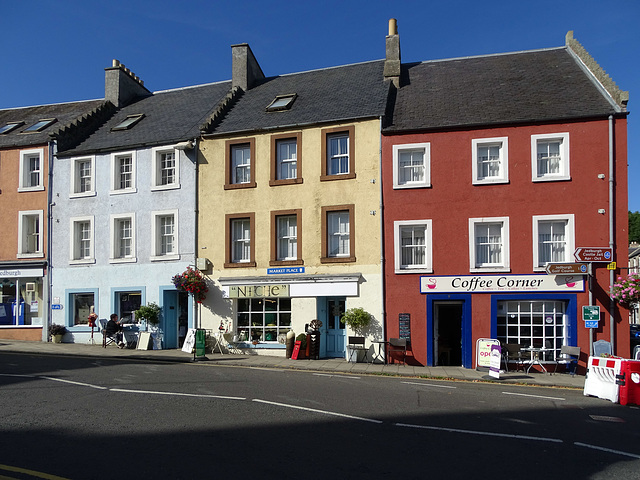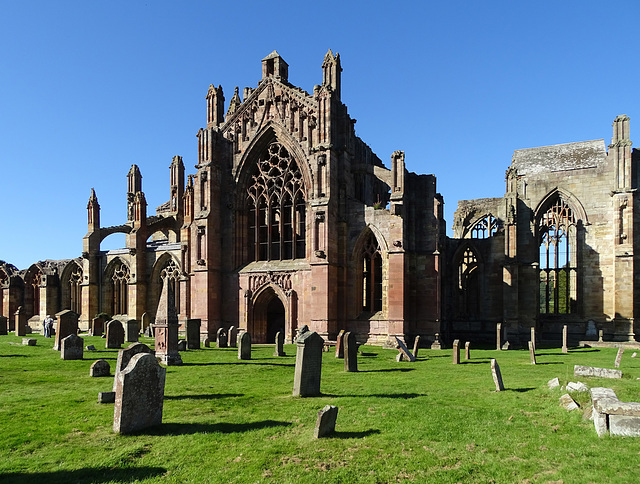
ROXBURGHSHIRE
20 Sep 2019
33 favorites
20 comments
Heron on the Tweed
This heron wasn't the only one looking out for a tasty morsel. There was a fly fisherman up to his thighs in the river.
20 Sep 2019
21 favorites
11 comments
Dryburgh Abbey Church looking east
It doesn't always rain in Scotland!
Dryburgh Abbey dates back to 1150. Hugh de Moreville was the main landowner in the area. His family had come across from Normandy with William the Conqueror 84 years earlier, and he himself had befriended King David I of Scotland.
Dryburgh's location in the Scottish borders meant that it inevitably became caught up in the wars between England and Scotland. It is said that in 1322 Edward II's army, retreating south to England, took exception to the sound of the bells of Dryburgh Abbey being rung to celebrate their defeat. They burned it down.
What emerged from a rebuilding process that probably took another 100 years was even bigger and better than before, despite further destruction by another English army in 1385. But the completed abbey of the 1400s would only see a further century of active use. The end effectively came on 4 November 1544 when some 700 English troops mounted a raid across the border, destroying both Dryburgh Abbey and the nearby town of Dryburgh.
Courtesy of www.undiscoveredscotland.co.uk/stboswells/dryburghabbey/index.html
The first Pip shows the inscription on the plinth of the cross.
The second PiP shows the simple stone tablet in the style of the standard headstones of the Imperial War Graves Commission of Earl Haig. The Haig Fund is a charity set up in 1921 by Field Marshal Douglas Haig, 1st Earl Haig to assist ex-servicemen. The Haig Fund continues to support veterans from all conflicts and other military actions involving British Armed Forces up to the present day. Its members sell remembrance poppies in the weeks before Remembrance Day/Armistice Day.
Jedburgh Abbey First Floor
Jedburgh Abbey, a ruined Augustinian abbey which was founded in the 12th century, is situated in the town of Jedburgh, in the Scottish Borders.
The foundation appeared to have the status of 'priory' in the early years and a man by the name of Daniel was described as the Prior of Geddwrda in 1139. The church was later raised to the status of monastery before becoming, in the years prior to King David's death in 1153, a fully fledged abbey dedicated to the Virgin Mary, probably in 1147.
20 Sep 2019
19 favorites
12 comments
Jedburgh Abbey Ground Floor
Jedburgh Abbey, a ruined Augustinian abbey which was founded in the 12th century, is situated in the town of Jedburgh, in the Scottish Borders.
The foundation appeared to have the status of 'priory' in the early years and a man by the name of Daniel was described as the Prior of Geddwrda in 1139. The church was later raised to the status of monastery before becoming, in the years prior to King David's death in 1153, a fully fledged abbey dedicated to the Virgin Mary, probably in 1147.
20 Sep 2019
27 favorites
21 comments
Coffee Corner
As one gets older then the first thing to do when visiting an area is to find a coffee shop with a loo.
Melorose Abbey
St Mary's Abbey, Melrose is a partly ruined monastery of the Cistercian order in Melrose, Roxburghshire, in the Scottish Borders. It was founded in 1136 by Cistercian monks at the request of King David I of Scotland, and was the chief house of that order in the country until the Reformation.
Courtesy of Wikipedia: www.google.com/search?client=firefox-b-d&q=Melrose+abbey+history
It was largely destroyed by Richard II's English army in 1385.
Jump to top
RSS feed- Latest items - Subscribe to the latest items added to this album
- ipernity © 2007-2024
- Help & Contact
|
Club news
|
About ipernity
|
History |
ipernity Club & Prices |
Guide of good conduct
Donate | Group guidelines | Privacy policy | Terms of use | Statutes | In memoria -
Facebook
Twitter



